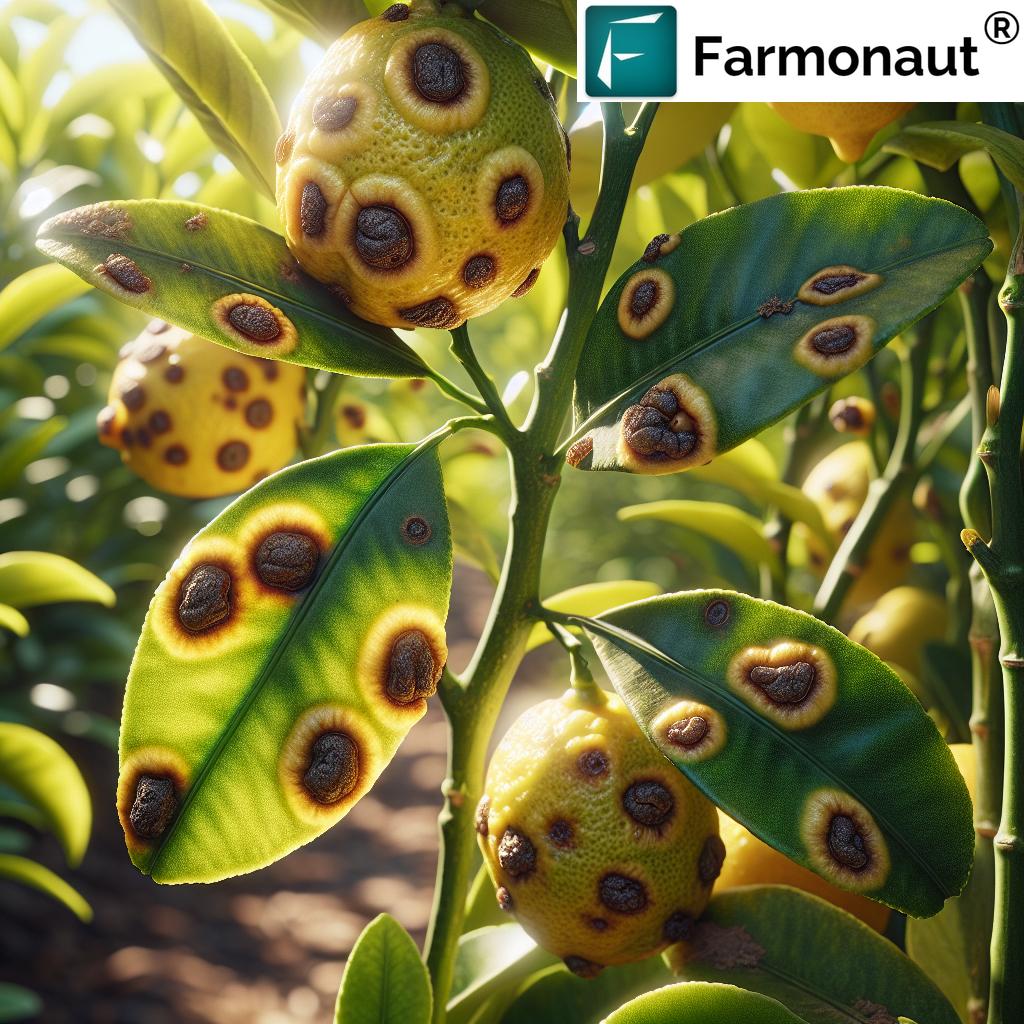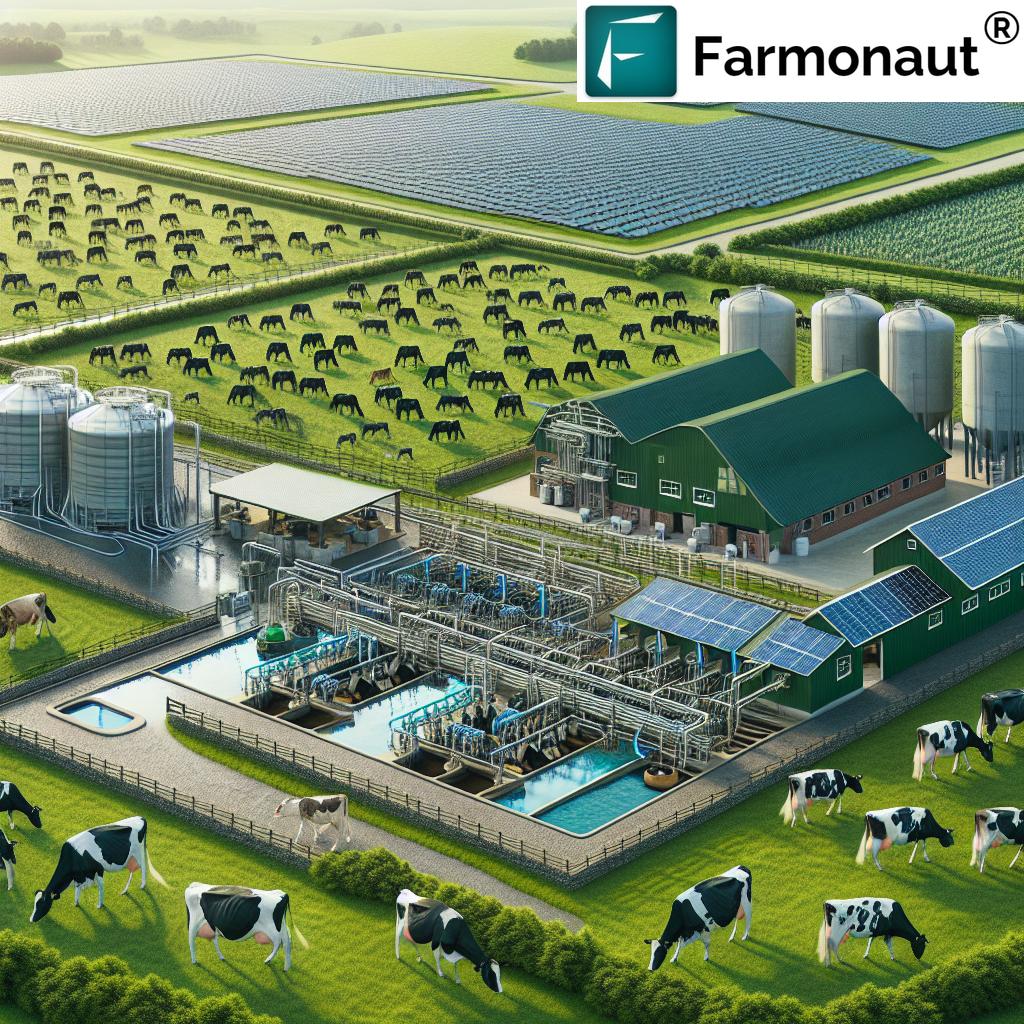Cercidiphyllum japonicum & Rhapidophyllum hystrix: Sustainable Forestry, Soil Health, and Biodiversity in 2026
Table of Contents
- Introduction: The Transformative Role of Cercidiphyllum japonicum and Rhapidophyllum hystrix
- Did You Know? Ecology Trivia
- Section 1: Cercidiphyllum japonicum in Modern Forestry Systems
- Section 2: Forestry Value of Rhapidophyllum hystrix (Needle Palm)
- Comparative Benefits Table: Cercidiphyllum japonicum vs. Rhapidophyllum hystrix
- Section 3: Towards Sustainable, Integrated Forestry Practices: 2026 & Beyond
- Farmonaut Technology for Forestry & Agriculture Management
- Frequently Asked Questions (FAQ)
- Conclusion: 2026—The Future of Biodiverse, Resilient Forestry
“Cercidiphyllum japonicum can sequester over 40 kg of CO₂ annually, aiding climate resilience in forestry ecosystems.”
Introduction: The Transformative Role of Cercidiphyllum japonicum and Rhapidophyllum hystrix
In the rapidly evolving fields of forestry and agriculture, selecting the right species is fundamental to ensure sustainable, ecological, and economic value well into 2026 and beyond. Cercidiphyllum japonicum, the Katsura tree native to East Asia (Japan and China), and Rhapidophyllum hystrix, commonly called the Needle Palm from the southeastern United States, have gained significant attention due to their unique contributions to soil health, climate adaptation, and biodiversity enhancement in modern land management.
The integration and utilization of these species offer strategic advantages for forestry practices seeking to balance environmental benefits with agricultural productivity. Both are known for their hardiness, rapid growth, and ability to thrive in varied climates and soil conditions, making them valuable assets in climate-resilient forestry for 2026.
Cercidiphyllum japonicum and Rhapidophyllum hystrix: At a Glance
- Cercidiphyllum japonicum (Katsura tree): A fast-growing, deciduous tree from East Asia, celebrated for its brilliant autumn colors and lightweight, durable timber.
- Rhapidophyllum hystrix (Needle Palm): A hardy, cold-tolerant palm native to the southeastern United States, offering unmatched resilience and biodiversity support.
Section 1: Cercidiphyllum japonicum in Modern Forestry Systems
Key Features & Growth Patterns of Cercidiphyllum japonicum
Cercidiphyllum japonicum, also known as the Katsura tree, is native to Japan and China. Its fast growth and adaptability make it well suited for temperate climates across East Asia and globally in regions with similar conditions. The heart-shaped leaves deliver brilliant autumn colors, enriching landscape diversity and serving as an attraction for eco-tourism. Cercidiphyllum stands out among deciduous species for resilience, thriving in soils with moderate moisture and good nitrogen availability.
The Katsura tree can reach a height of 10–45 meters under optimal conditions and typically matures for timber harvest within 20–30 years, a relatively short time compared to many hardwoods. It can quickly establish in agroforestry systems or reforestation efforts, providing canopy cover and stabilizing the landscape.
Economic and Ecological Benefits in Forestry and Agriculture
- Timber & Commercial Applications: Cercidiphyllum japonicum’s wood is lightweight yet strong, desirable for specialty furniture, veneers, and musical instruments. Its market value is increasingly recognized for niche products, combining beauty with functionality.
- Landscape Restoration: Used extensively in reforestation and ecosystem restoration projects in Japan, China, and beyond, due to its robust adaptability and contribution to returning biodiversity to degraded lands.
- Economic Sustainability for Communities: By supporting local economies through sustainable harvesting, Katsura a enhances income for farmers and foresters, especially when grown as part of integrated plantations or mixed stands.
- Sustainable Leaf Litter: The leaf litter decomposition of Cercidiphyllum improves soil health by cycling organic matter and nutrients vital for both tree and crop systems.
Soil Health, Nitrogen Cycling, and Agroforestry Integration
A primary concern for forestry in 2026 is the restoration of soil health and overall system resilience. Cercidiphyllum species are particularly valuable in this context:
- Nitrogen Cycling: The tree’s decomposing leaves enhance nitrogen cycling, supporting the demands of both understory crops and the tree’s own growth. Enhanced microbial activity further supports soil fertility.
- Windbreak/Agricultural Protection: Planting Katsura trees as windbreaks reduces soil erosion and protects sensitive agricultural lands from harsh winds, drought, and moisture loss.
- Canopy Microclimate Regulation: Canopy shade reduces soil temperature stress for delicate understory crops, creates moisture retention zones, and increases productivity in mixed systems.
Key Takeaways for Cercidiphyllum japonicum Forestry
- Known for rapid growth, quick establishment, and excellent canopy expansion.
- Ideal for reforestation, integrated plantations, soil improvement, and timber production.
- Supports improved biodiversity through habitat restoration and understory crop support.
Section 2: Forestry Value of Rhapidophyllum hystrix (Needle Palm) in 2026
“Rhapidophyllum hystrix supports up to 30% more understory biodiversity than traditional forestry species.”
Native Habitat & Unique Resilience of Rhapidophyllum hystrix
Rhapidophyllum hystrix, or Needle Palm, is an exceptionally hardy palm native to the southeastern United States, including regions prone to cold snaps and difficult growing conditions. Among palms, it is unrivaled for its cold tolerance, surviving temperatures as low as -23°C (-10°F), making it suitable for forestry projects outside the traditional palm-growing tropics.
In 2026 and beyond, Rhapidophyllum hystrix is set to become a stabilizing species in land reclamation and ecological restoration projects, especially in areas affected by desertification and climate volatility. Its deep root system and dense, spiny foliage make it an excellent barrier and protector of vulnerable landscapes.
Role in Land Reclamation & Erosion Control
- Soil Stabilization: The dense, fibrous root systems of Rhapidophyllum hystrix anchor soil, preventing erosion on slopes, river banks, and reclaimed mining lands.
- Resilience to Poor Soil: This species thrives in nutrient-poor, acidic or even sandy soils where most palms and trees would fail, expanding the reach of reforestation and reclamation programs and helping to restore balance in ecosystems previously deemed lost to degradation.
- Reduction in Desertification: By forming living barriers and improving ground cover, Rhapidophyllum hystrix helps halt the advance of desert-like conditions in susceptible zones.
Biodiversity & Protective Roles in Forestry and Agroforestry Systems
- Wildlife Support: The dense, spiky foliage provides shelter for small mammals, birds, and beneficial insects, thereby increasing the biodiversity of forestry and agricultural lands by up to 30% compared to more conventional forestry species.
- Living Fences: As a protective barrier, Rhapidophyllum hystrix serves as a living fence—reducing crop damage from large herbivores and deterring unauthorized human intrusion—reducing the need for artificial or chemical deterrents.
- Integrated Pest Management: By nurturing a variety of microhabitats, the palm indirectly supports natural pest controllers, limiting the spread and impact of agricultural pests without reliance on chemical solutions.
Comparative Benefits Table: Cercidiphyllum japonicum vs. Rhapidophyllum hystrix
| Species | Geographic Origin | Growth Rate (Maturity) |
Soil Health Impact | Biodiversity Value (Local Species % Increase) |
Carbon Sequestration Potential (tons/ha/year) |
|---|---|---|---|---|---|
| Cercidiphyllum japonicum | East Asia Japan, China |
Fast 20–30 years |
High | +25% (Varied to location) |
~4–6 |
| Rhapidophyllum hystrix | Southeastern United States | Moderate 15–25 years |
Moderate–High | +30% | ~3–5 |
| Other Forestry Species (e.g., Pinus, Eucalyptus) |
Global | Varied 10–40 years |
Varied | Up to +10% | ~2–4 |
| Comparative estimates for key indices relevant in sustainable forestry over a 15–30 year rotation. Actual outcomes vary by climate, soil, and management systems. | |||||
Section 3: Towards Sustainable, Integrated Forestry Practices—2026 & Beyond
Facing global challenges—climate change, biodiversity loss, and escalating resource demands—the management philosophies guiding forestry and agriculture have evolved. For 2026, the trend is clear: integrating species such as cercidiphyllum japonicum and rhapidophyllum hystrix is essential in building resilient landscapes and sustainable land management systems.
- Mixed-Species Plantations: Incorporating cercidiphyllum and rhapidophyllum into plantations increases resilience to pests, disease outbreaks, and extreme weather while supporting diverse wildlife communities and ecosystem function.
- Soil Restoration & Stress Reduction: Planting these species can rapidly restore degraded soils through organic matter enrichment, nutrient cycling, and microclimate regulation, especially crucial in zones vulnerable to environmental stress.
- Carbon Sequestration: With high and moderate carbon capture abilities, both species contribute meaningfully to carbon footprinting & tracking efforts required for climate mitigation projects.
- Research & Breeding Programs: Ongoing research is optimizing genetic stock for better growth rates, improved stress tolerance, and adaptability across wider climates—advancing the utility of both species in forestry management.
By leveraging species diversity, soil health restoration, and modern digital tools (like satellite and AI-driven management), we move closer to true sustainability and environmental resilience.
Farmonaut’s Role in Supporting Sustainable Forestry and Agriculture
Farmonaut is a satellite technology company dedicated to providing actionable, data-driven solutions for modern forestry, agriculture, and more. While we don’t manufacture forestry products, nor do we act as an online marketplace or regulator, our tools empower stakeholders to implement best management practices for sustainable land use.
- Satellite-Based Monitoring: Using our platform, users can track vegetation health, analyze soil conditions, and assess carbon sequestration progress in plantations and mixed-forestry systems.
- AI-Powered Advisory Services: Our Jeevn AI Advisory system delivers real-time insights and tailored recommendations for agroforestry and sustainable forestry plantations.
- Blockchain Traceability: Trace the journey and authenticity of agricultural and forestry products. See more at our Traceability page.
- Environmental Impact Monitoring: Know your carbon footprint, assess emissions, and meet regulatory requirements with precision. Learn more about our carbon footprinting tools.
- Resource & Fleet Management: Enhance productivity and logistics in managing vast forest lands with fleet management and large-scale farm management solutions offered on our Agro-Admin App.
We support research, monitoring, and the operational efficiency of sustainable forestry projects with:
- Farmonaut Satellite API for custom integrations into your forestry or land-management systems.
- Developer documentation for seamless implementation.
Our technology is scalable, ensuring affordability and access for smallholders, community forestry groups, and large forestry enterprises alike—all essential for scaling ecological and economic value in modern forestry.
Frequently Asked Questions (FAQ) – Cercidiphyllum japonicum & Rhapidophyllum hystrix Forestry
- What makes Cercidiphyllum japonicum valuable in modern forestry?
Cercidiphyllum japonicum, or Katsura tree, exhibits rapid growth, aesthetic beauty, and significant environmental resilience. Its efficient nutrient cycling, especially nitrogen, aids soil health, while its lightweight, strong timber is suitable for specialized wood products and furniture in 2026 and beyond. - How does Rhapidophyllum hystrix support soil health and biodiversity?
Rhapidophyllum hystrix, the Needle Palm, stabilizes soils, prevents erosion, and increases habitat complexity for wildlife. It supports up to 30% more understory biodiversity than traditional forestry species, enhancing ecosystem services in agroforestry systems. - Can these species be used together in integrated forestry systems?
Yes. Planting both species together in mixed plantations maximizes ecological resilience against disease, improves soil fertility, and enhances wildlife corridors—key aspects of climate-smart, biodiverse forestry. - What regions are suitable for planting Cercidiphyllum japonicum outside its native range?
Beyond East Asia (Japan, China), Cercidiphyllum can be cultivated in any temperate or subtropical climate with adequate moisture and soil fertility, making it a candidate for global reforestation projects. - How does Farmonaut enhance the management of forestry projects?
We provide satellite-based monitoring, data analytics, carbon footprint tracking, and resource management solutions that empower stakeholders to make informed, data-driven decisions for sustainable forest management. These tools are critical for large-scale field mapping, supply chain traceability, and environmental impact assessments. - Are there cost-effective options for smallholders to utilize Farmonaut technologies?
Yes. Our platform is designed to be accessible and affordable, offering app-based services, subscriptions, and resource management tools suitable for community forestry, smallholder farms, and NGOs operating in resource-limited settings. - Where can I find more about Farmonaut’s satellite API for forestry monitoring?
Detailed API information and developer documentation can be accessed at Farmonaut Satellite API and Developer Docs.
Conclusion: 2026—The Future of Biodiverse, Resilient Forestry
As we march into 2026 and beyond, both Cercidiphyllum japonicum and Rhapidophyllum hystrix stand as pillars of sustainable forestry due to their ecological resilience, capacity for soil improvement, and support of biodiversity. Their integration into forestry and agricultural management systems is increasingly paramount for ensuring climate resilience, economic value, and environmental protection.
These species exemplify the synergy between traditional knowledge and modern science, driving restoration, carbon capture, and economic opportunity—all supported by advanced technological tools such as satellite monitoring and AI analytics. Farmonaut remains committed to equipping tree growers, land managers, and governments with unbiased, affordable tools for the next era of ecological stewardship.
Summary: Cercidiphyllum japonicum and Rhapidophyllum hystrix will define the next generation of climate-smart, sustainable forestry and agricultural systems. Their unique biological properties, remarkable adaptability, and compatibility with digital landscape management establish them as cornerstone species for resilient land-use strategies in 2026 and beyond.












